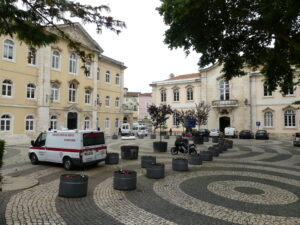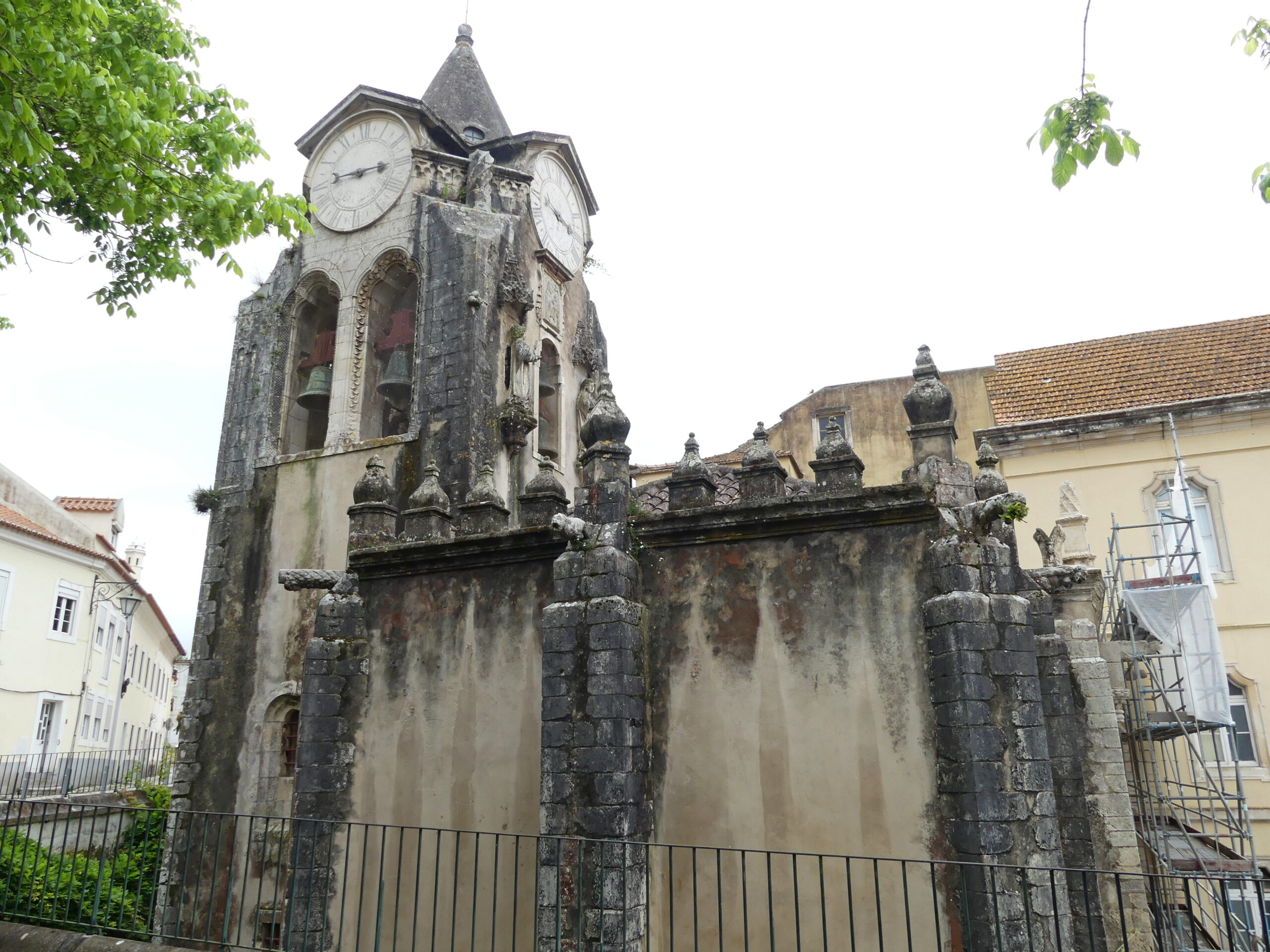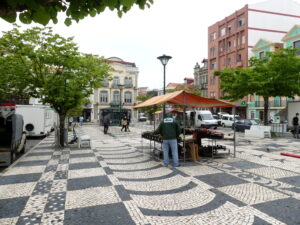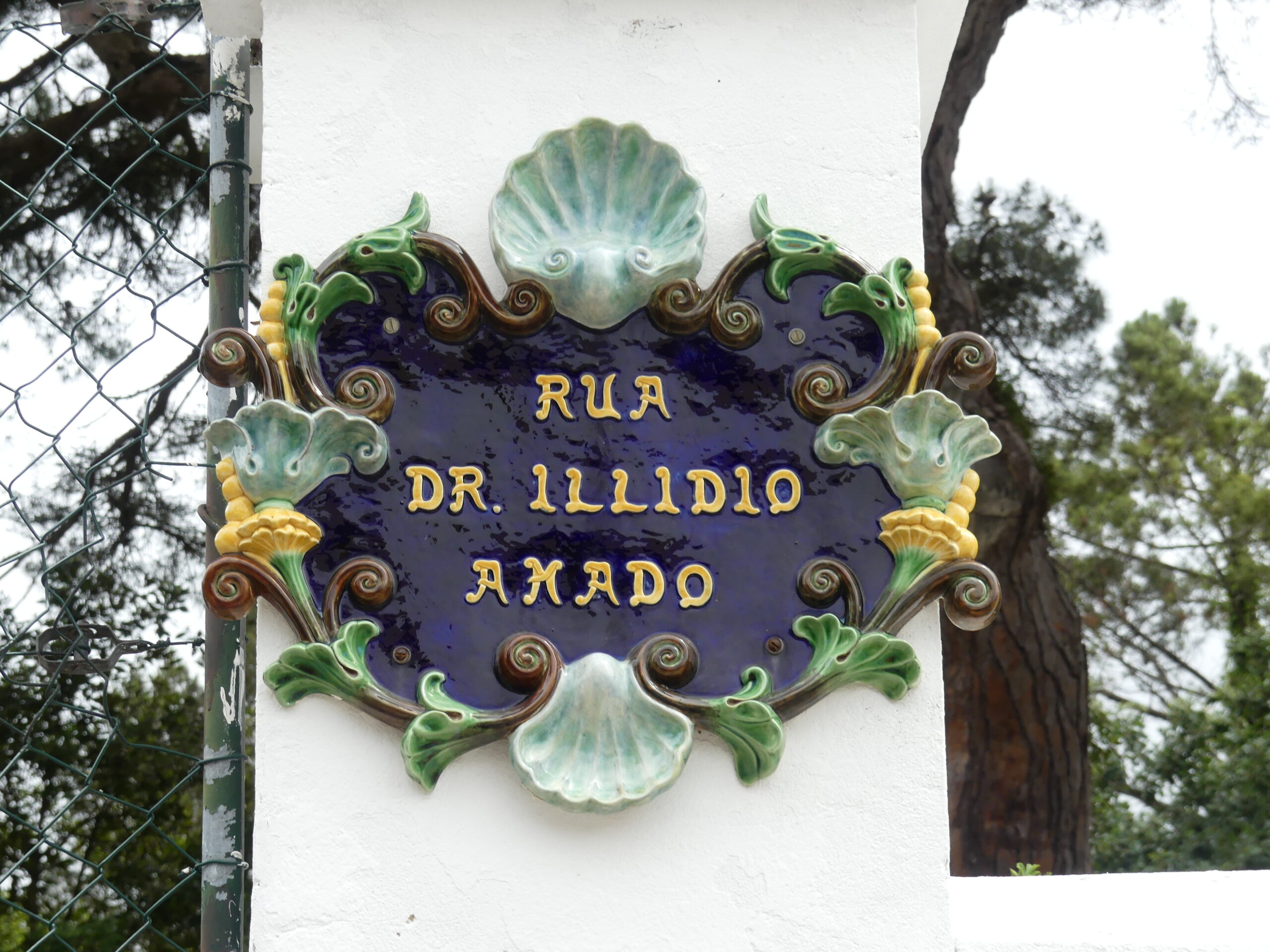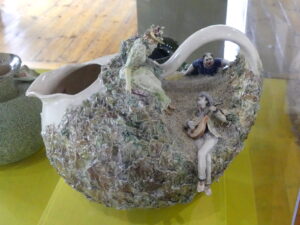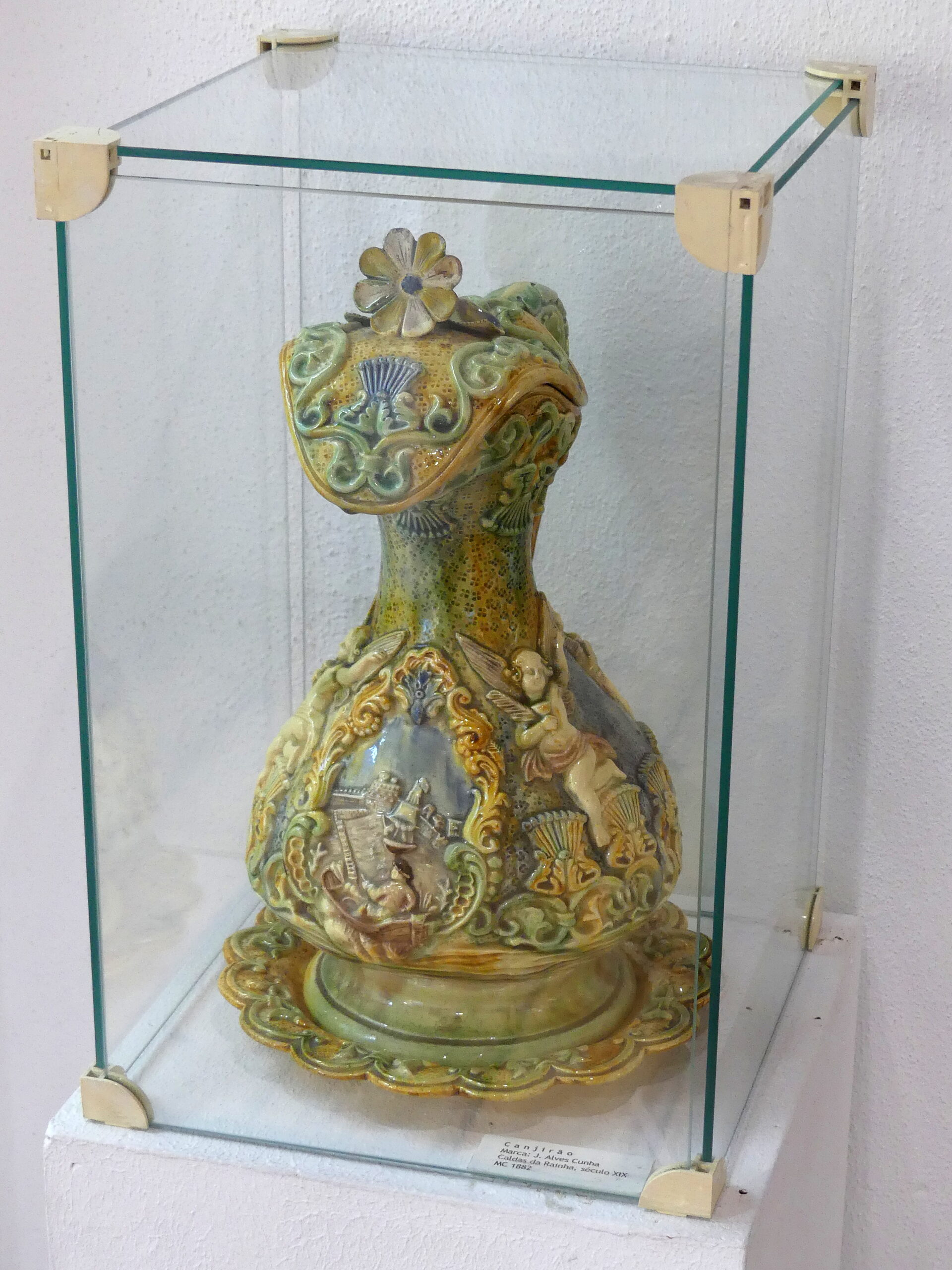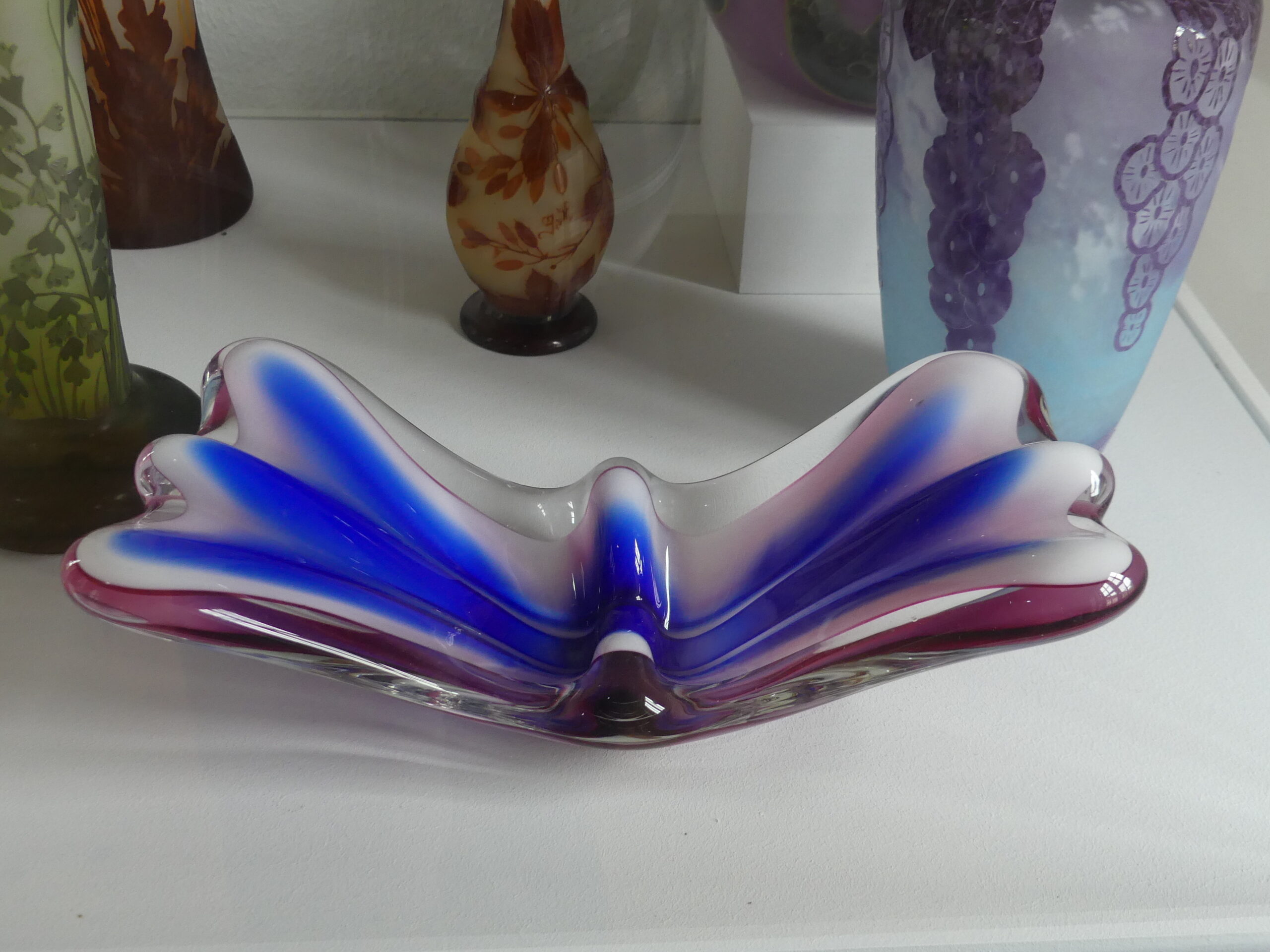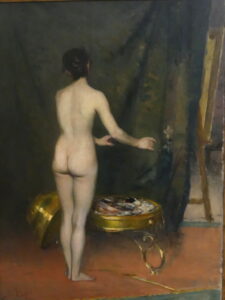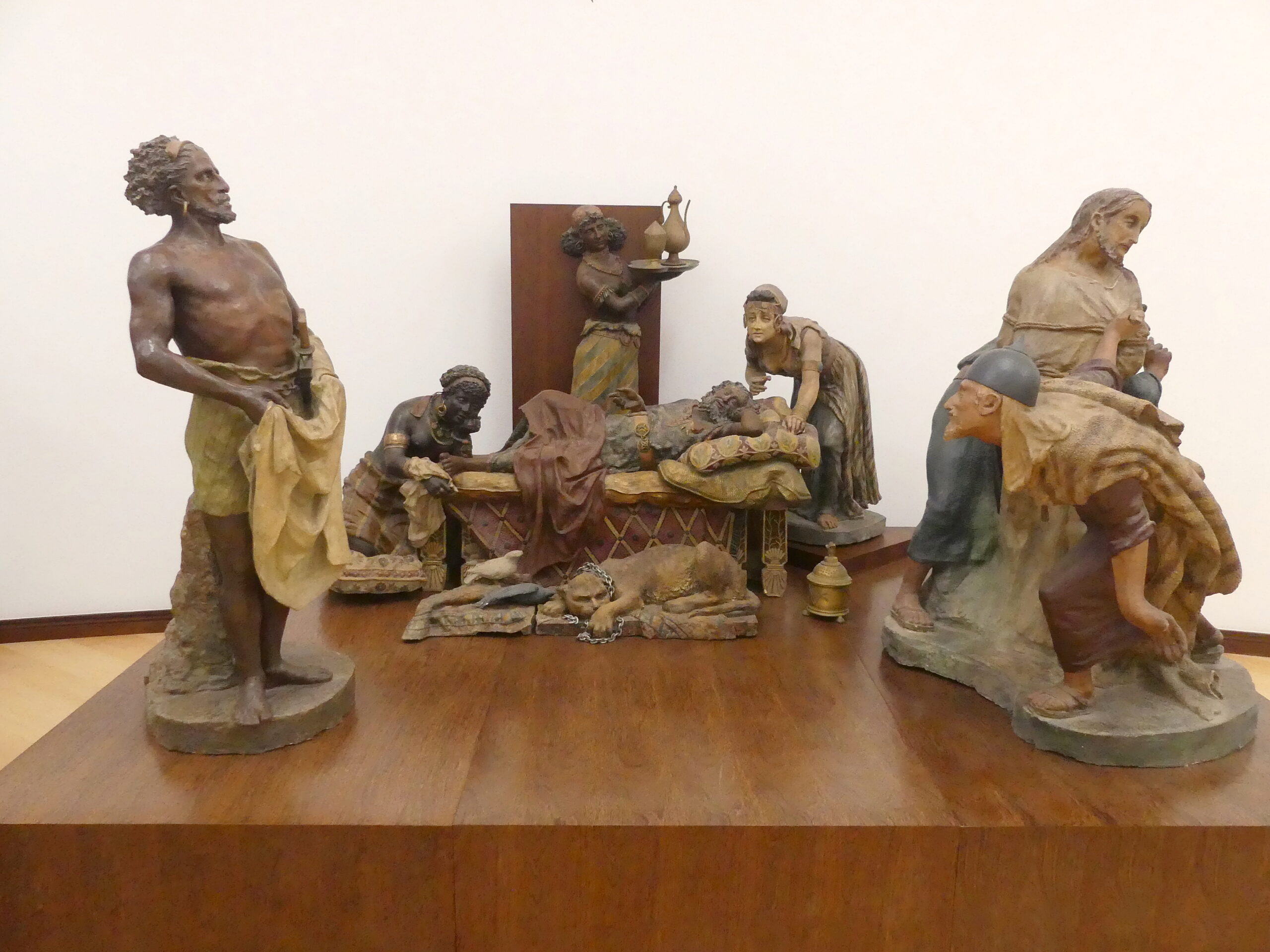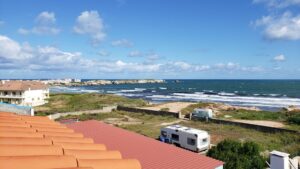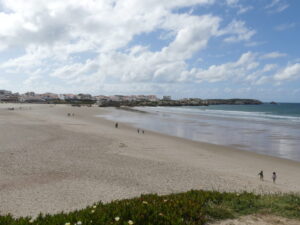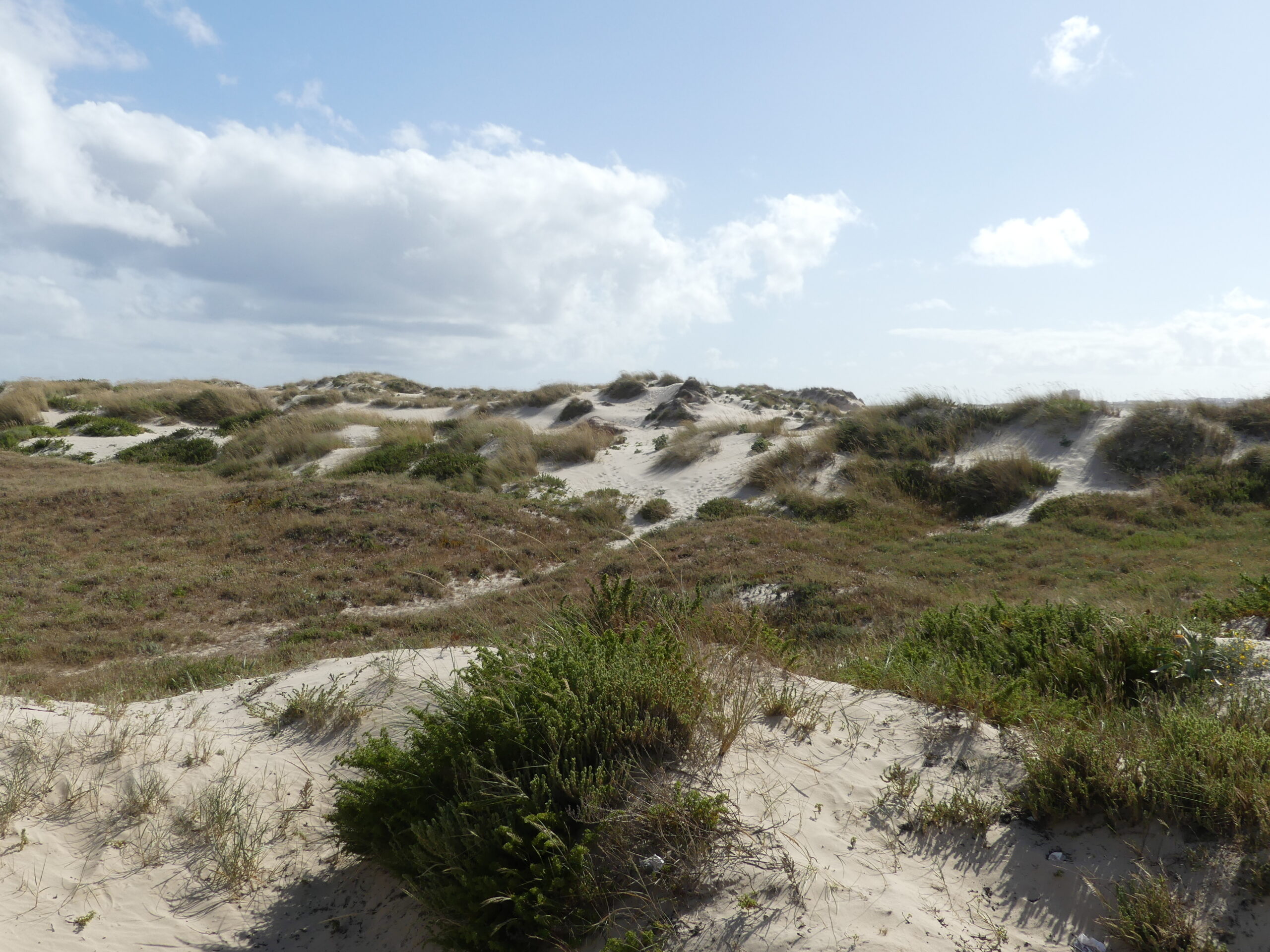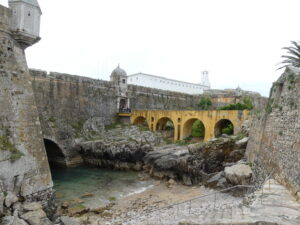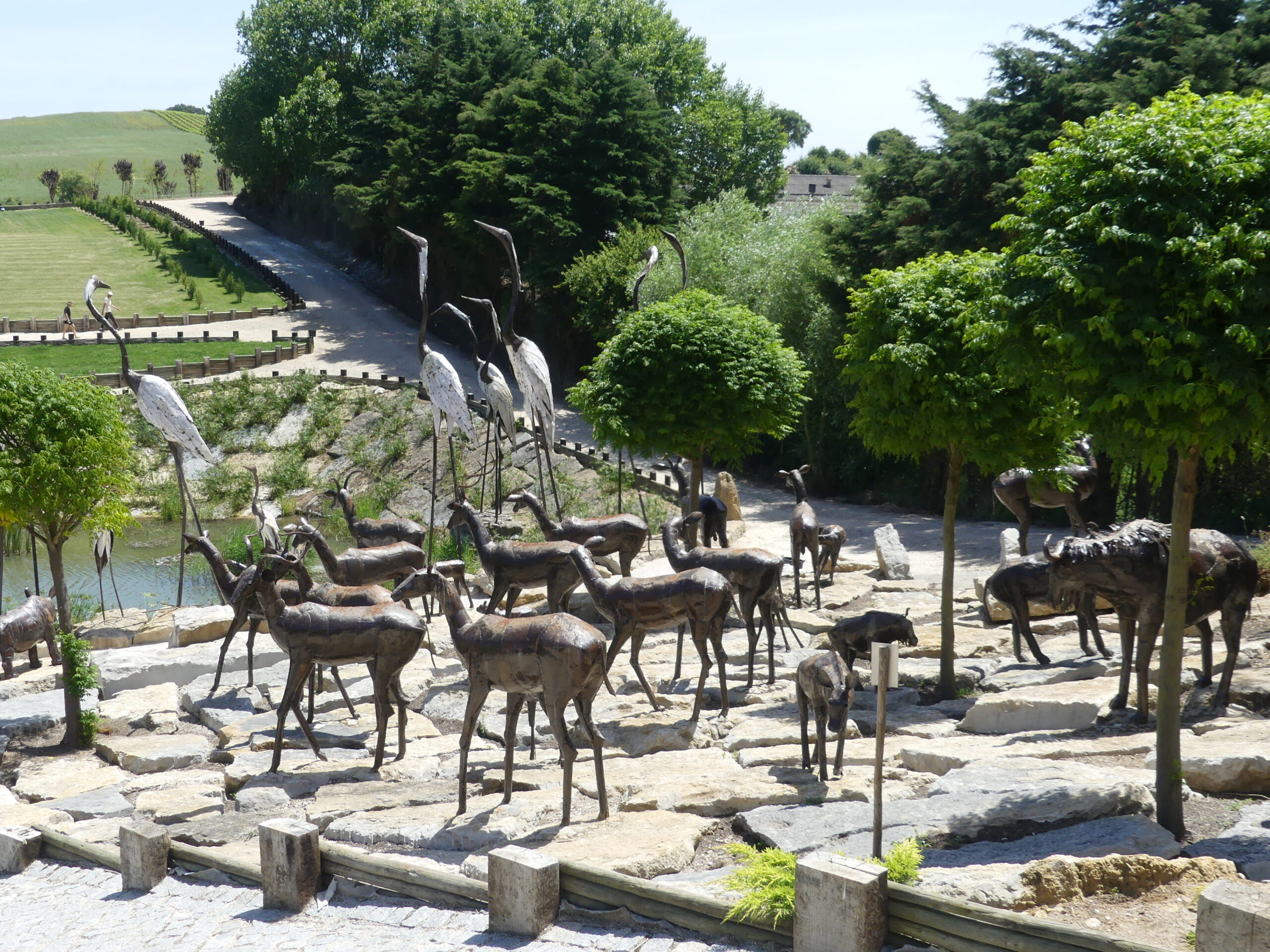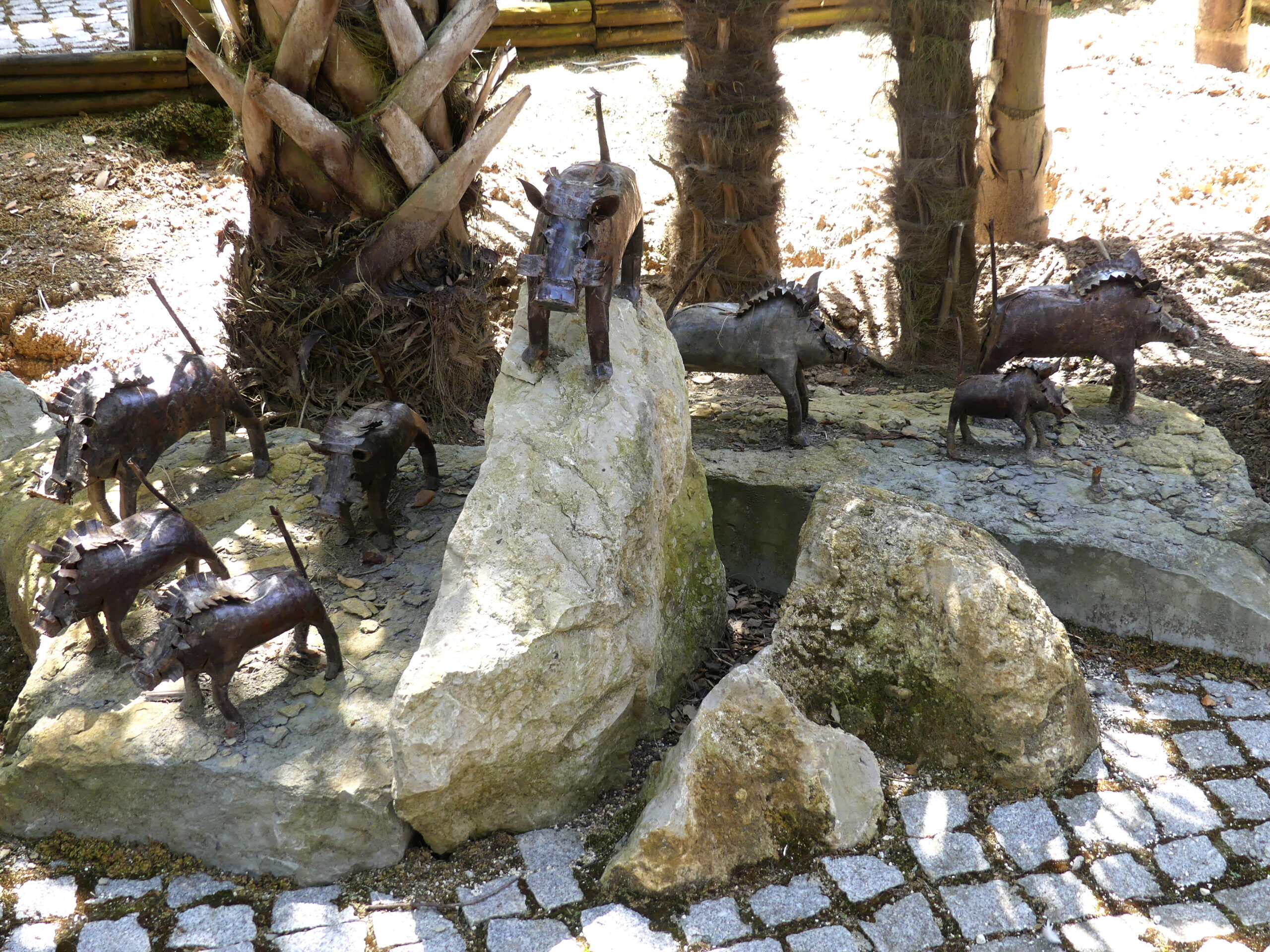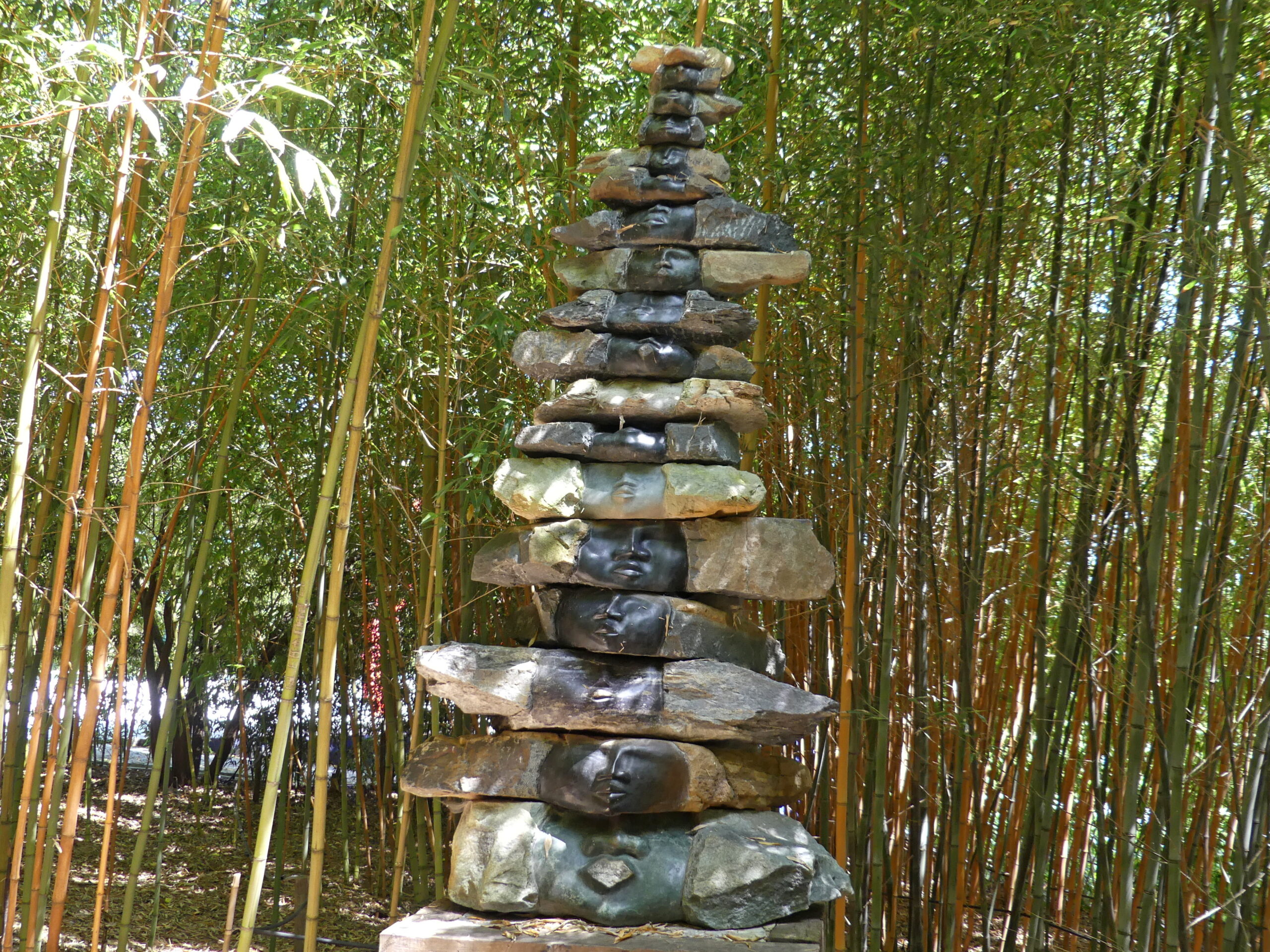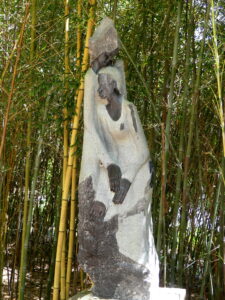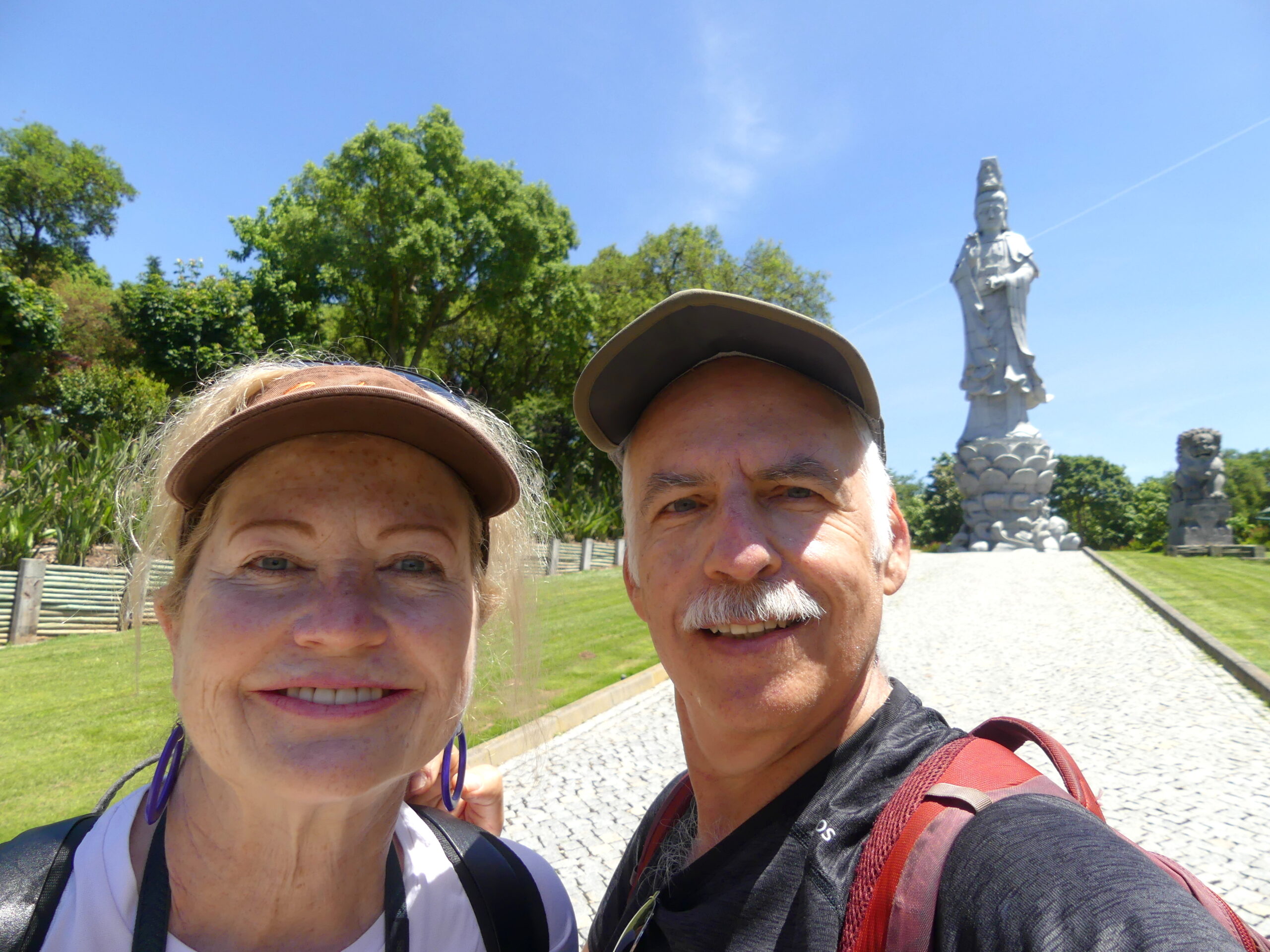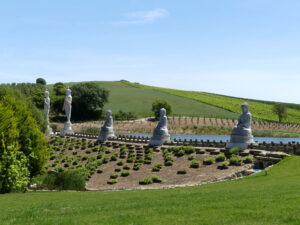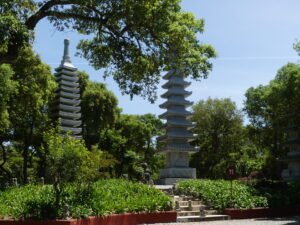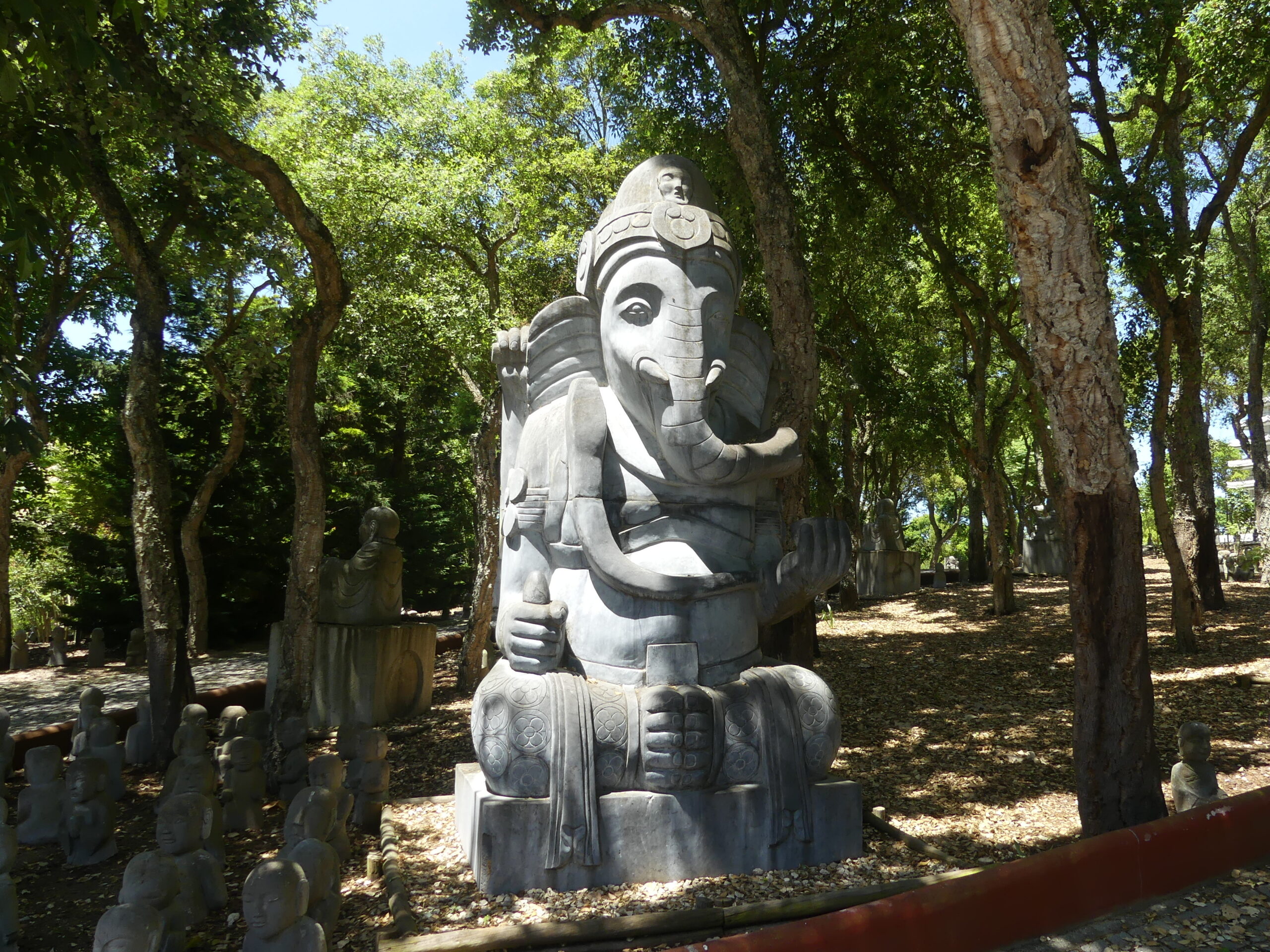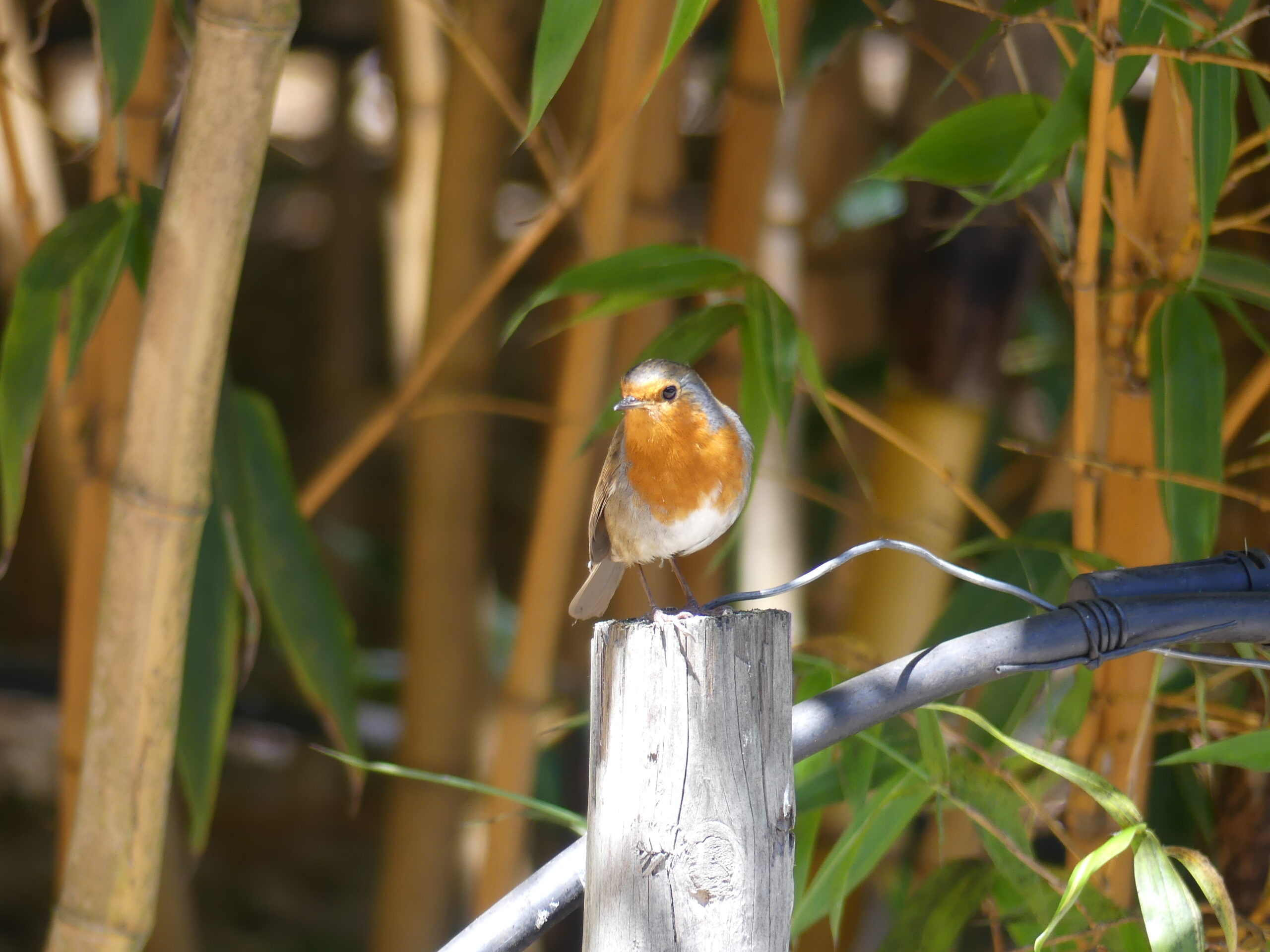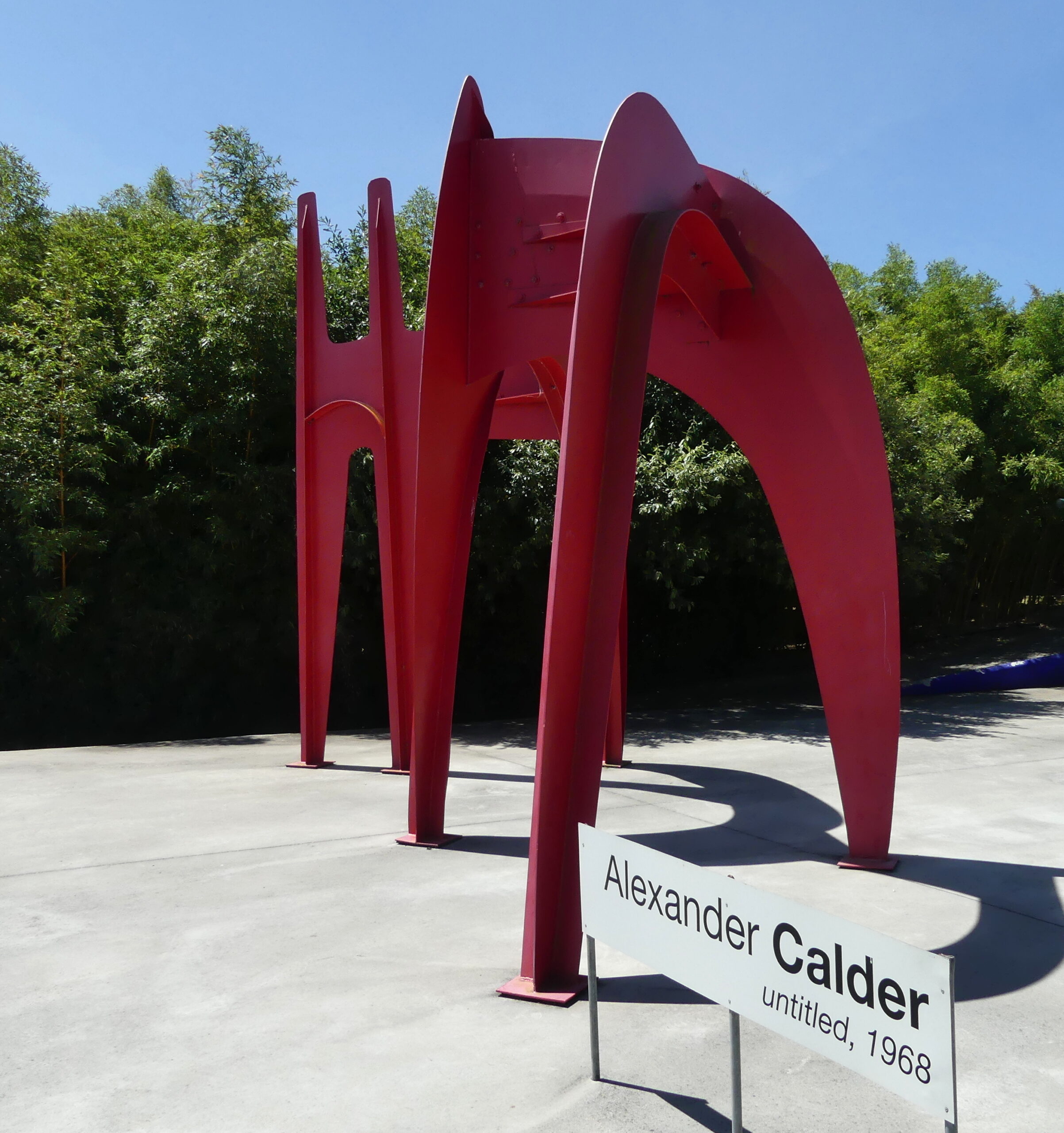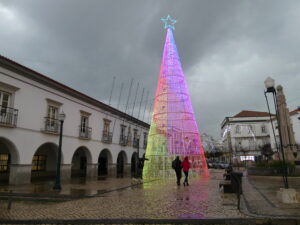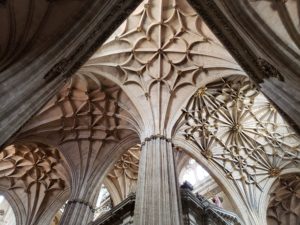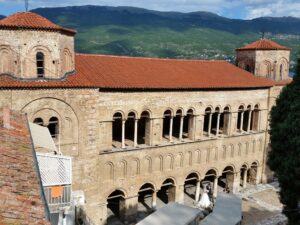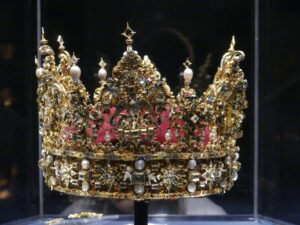In brief: Near Obidos, we found three sources of physical and mental well-being: the hot springs and ceramics of Caldas da Rainha; the surf and sand of Baleal/Peniche; and the rambling outdoor garden of Buddha Eden.
The walled city of Obidos, with its views from on high across a hilly landscape, can seem like bliss. But nearby there are other sources of physical and mental well-being. Among these are the hot springs and ceramic arts of Caldas da Rainha, the surf and sand of Baleal and Peniche, as well as the rambling outdoor garden of Buddha Eden.
Caldas da Rainha: Mud
At the end of the 15th century, hot water and mud began to draw Portuguese to Caldas da Rainha, “The Queen’s Hot Springs,” where Queen Leonor founded the world’s oldest spa. As the story goes, she tried out the sulfurous waters in which villagers dipped to cure their ailments, and she discovered the same beneficial effects. She then quickly hocked some jewelry and re-allocated her property rents. With this money, she built a charitable hospital to heal the bodies of the poor and ailing using those muddy waters, as well as a church to heal their spirits.
The renovated hospital buildings still stand near the city’s rambling central park. They and the spa buildings are still used for treating the ill, but now with more than muddy waters.
The town thrived as a spa during the international hey-day of spas in the 19th and early 20th centuries.
Her church – an unusual 15th century Gothic – also survives. We could only view the exterior of this spiritual spa at Caldas, because renovation work occupied the interior. The clocks had stopped too.
Caldas today is famous for its market days, with Portugal’s only daily outdoor farmers’ market, plus a huge weekly goods market. The market gathers in this charming central plaza, caught here at the very end of market time.
The peaceful pond of Caldas’ central park looking across at an old hotel for spa-goers that more recently served as military barracks. The massive building is currently a run-down foreboding place, almost brutalist architecture, but there are plans…
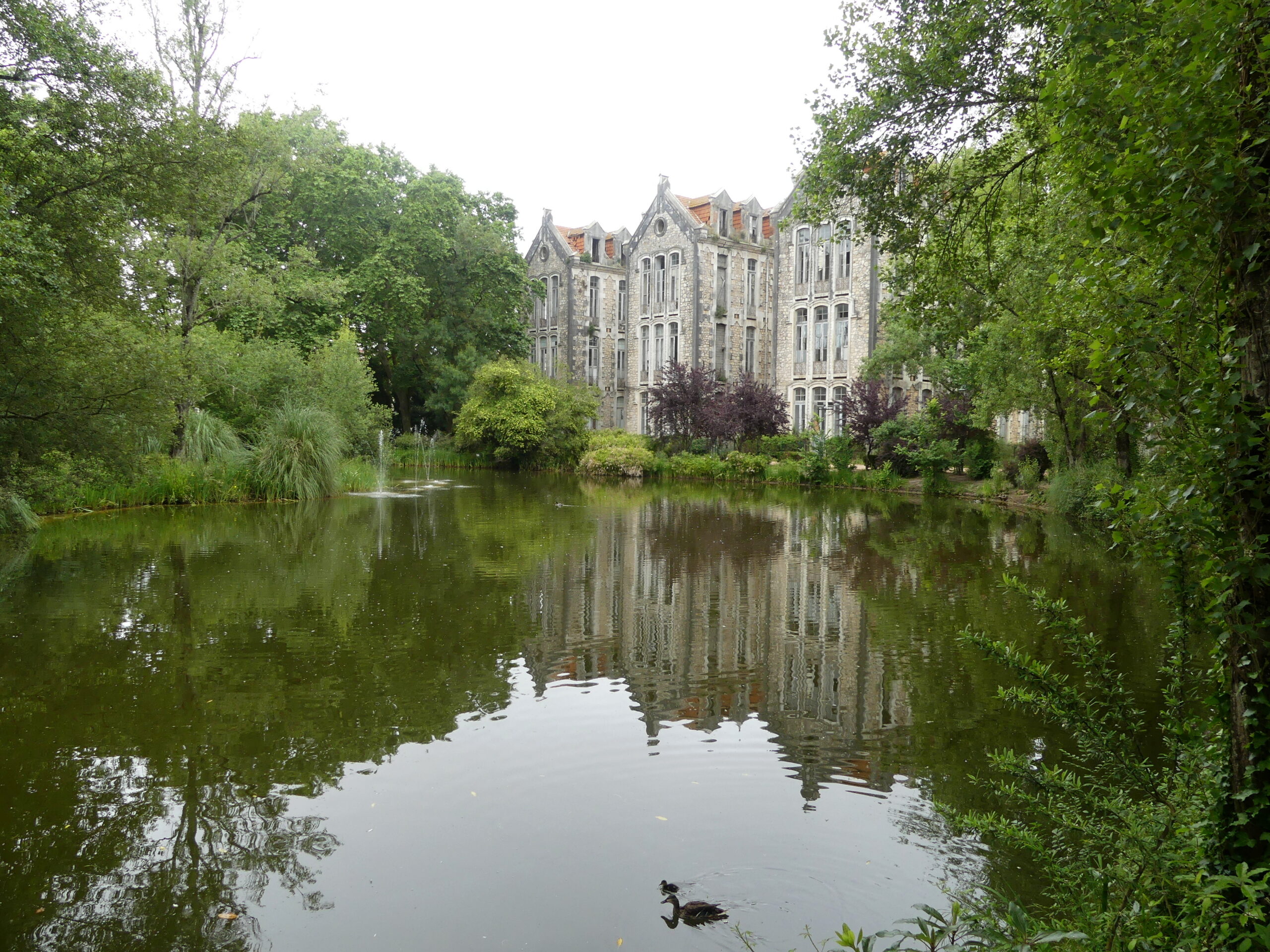
Caldas is now a sizable arts town as well, thriving in part on other uses of mud. Over a hundred years ago, the master ceramicist Rafael Bordalo Pinheiro started making fine glazed pottery here in a factory that is still thriving. And visitors can see more at the charming Ceramics Museum. In their baked and painted form, the muddy waters still attract attention.
The old stone villa of the Ceramics Museum nestles within its own bit of park at the edge of the main central park. The outside is filled with splendid tilework, statuary and whimsical ceramics based on nature – as well as plants and flowers from real nature.
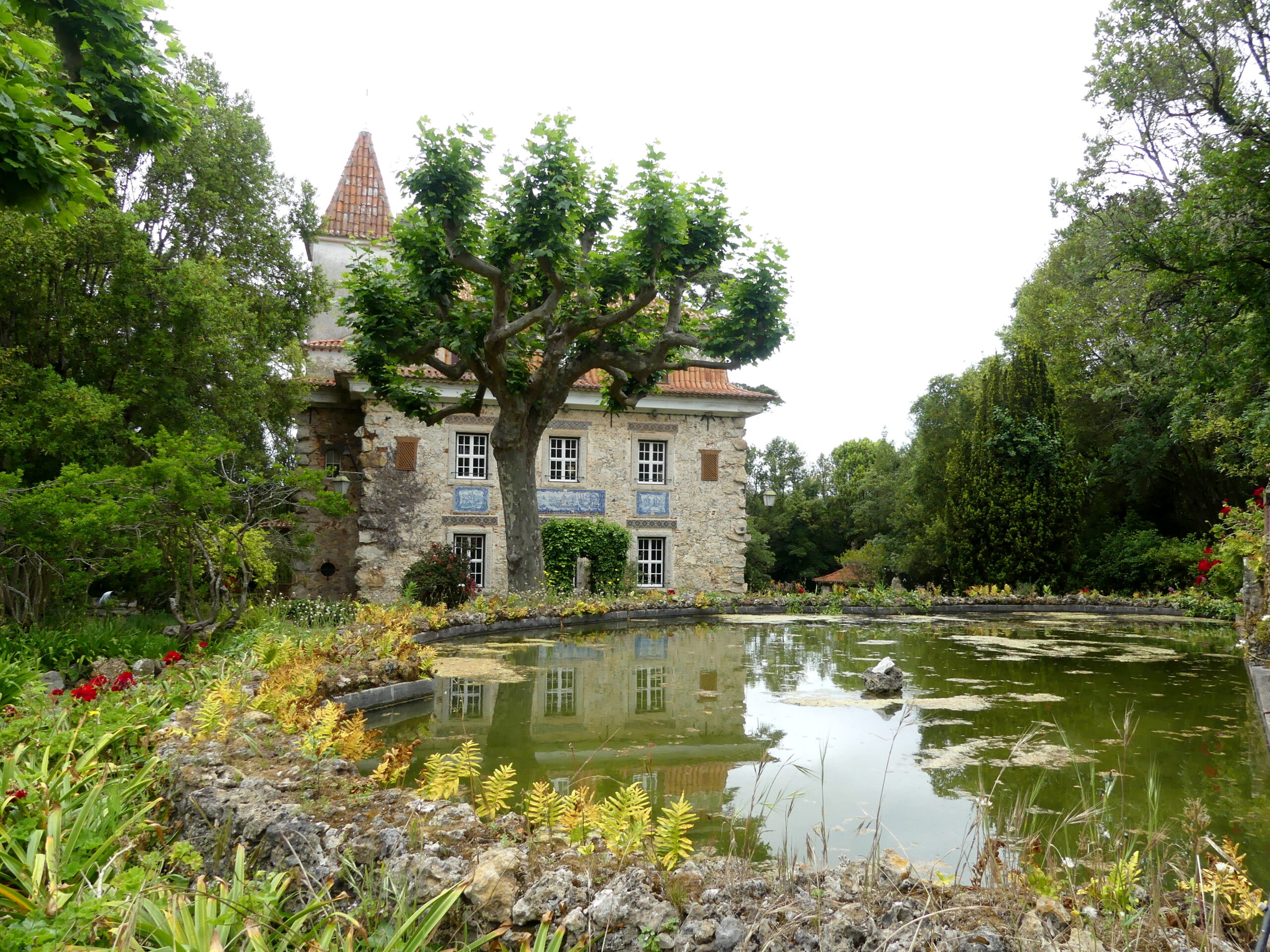
Even the street signs are made of Louça de Caldas, the glazed ceramic method at Caldas. This one is at the Ceramics Museum.
Odre Serenata (1896) A whimsical or troubling ceramic gourd designed by Bordalo Pinheiro, whose ambiguous third figure seems to interrupt an idyllic serenade enjoyed by two lovers in modern dress, on a outcropping that seems to smell of the sea.
This is at the Ceramics Museum. Nearby at the Pinheiro outlet store along the central park, you can buy charming and gracious ceramics for yourself.
Nouveau baroque? A thrilling intricate water pitcher designed by J. Alves Cunha in 1882, at the Ceramics Museum.
Swedish artist Paul Keldev designed this lovely modern butterfly tray in the mid-20th century. It’s part of the international and modern collection on display at the Ceramics Museum.
The Jose Malhoa Museum, in the center of the main park, is another noted art institution in Caldas. It is dedicated to the work of this famous late 19th/early 20th century Portuguese painter who demonstrated a chameleonic range of styles over his lifetime.
Here is his very discreet, Manet-style painting, Model’s Rest (1894).
The Malhoa Museum also includes other regional artists of his period including work by Bordalo Pinheiro.
This tableau by him, one of several life-sized scenes in clay representing the stations of the cross, shows Herod lolling in luxury while Jesus is vilified to the right. The supportive cast members in each of the scenes are perhaps the most powerfully crafted.
Baleal and Peniche: Surf and Sand
What’s up on the Portuguese coast? Surf’s up! As most people here know, Portugal offers good, great and even world-class waves along its Atlantic beaches. With one omission, we fully checked out the scene at busy Baleal near Óbidos – staying at a surfer’s hostel, drinking sundowners at an aprés-surf gathering spot, prowling its rocky peninsula, and dining at the local’s favorite vegetarian eatery. Next time perhaps we should try the surfing.
From the rooftop of our surfer’s hostel, we survey the surf conditions on a very windy, cool afternoon.
Twenty or more surfers float in the water toward the end of the day (count them!), waiting for their waves. Behind them are the jagged rocks of Baleal’s peninsula head. Meanwhile, the guys on the beach discuss how well they did. Classes are ubiquitous here, as are surf shops.
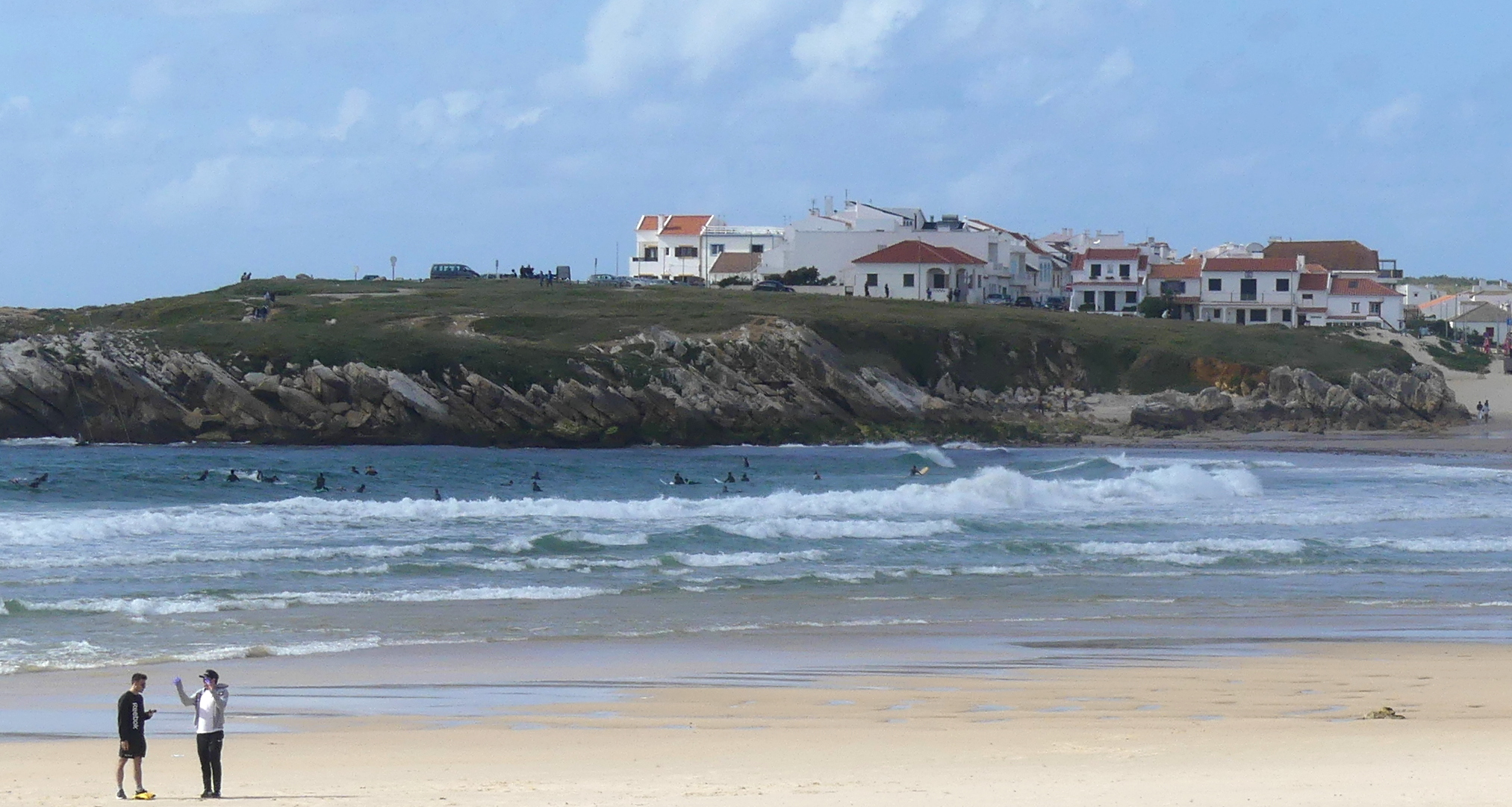
Our world view lightens at the surfer’s beach bar. The outside seating was busy, but still socially distanced. A small band played folksy, bluesy Portuguese music. Some surfers’ dogs pranced gleefully over the broad sandy beach. We felt refreshingly normal again.
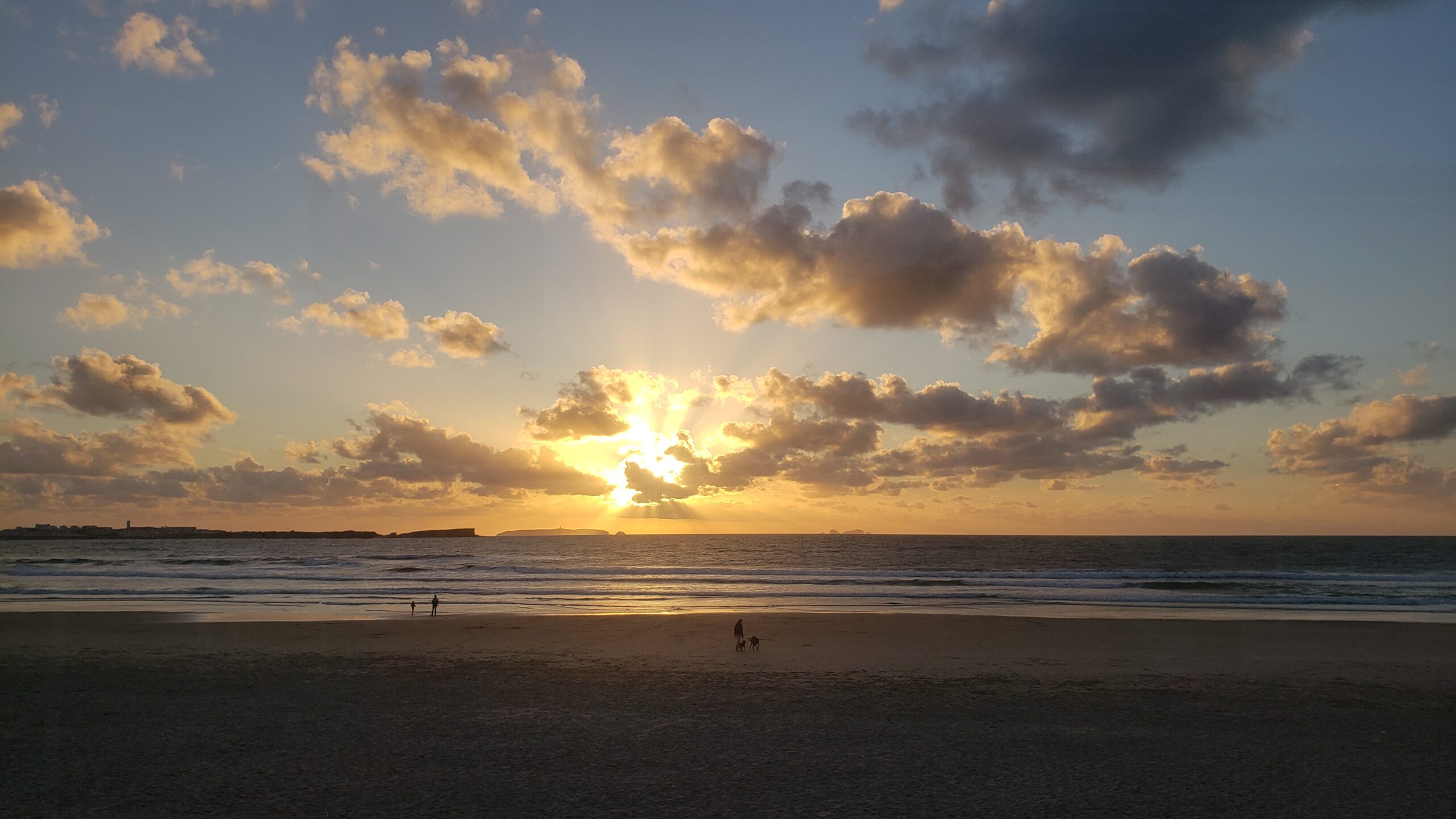
The beaches at Baleal invite walkers, bathers, and – near the rocks – more surfers. In the background, across the bay, stretches the peninsula of much more touristy Peniche.
The sand dunes of the area, as below, whisked into shape by winds, also imitate the waves enjoyed by surfers.
A more placid cove at the neck of Baleal’s peninsula, with the surfing beach in the backdrop. Such wonderful views make the inns and residences of the peninsula head very inviting to occupy.
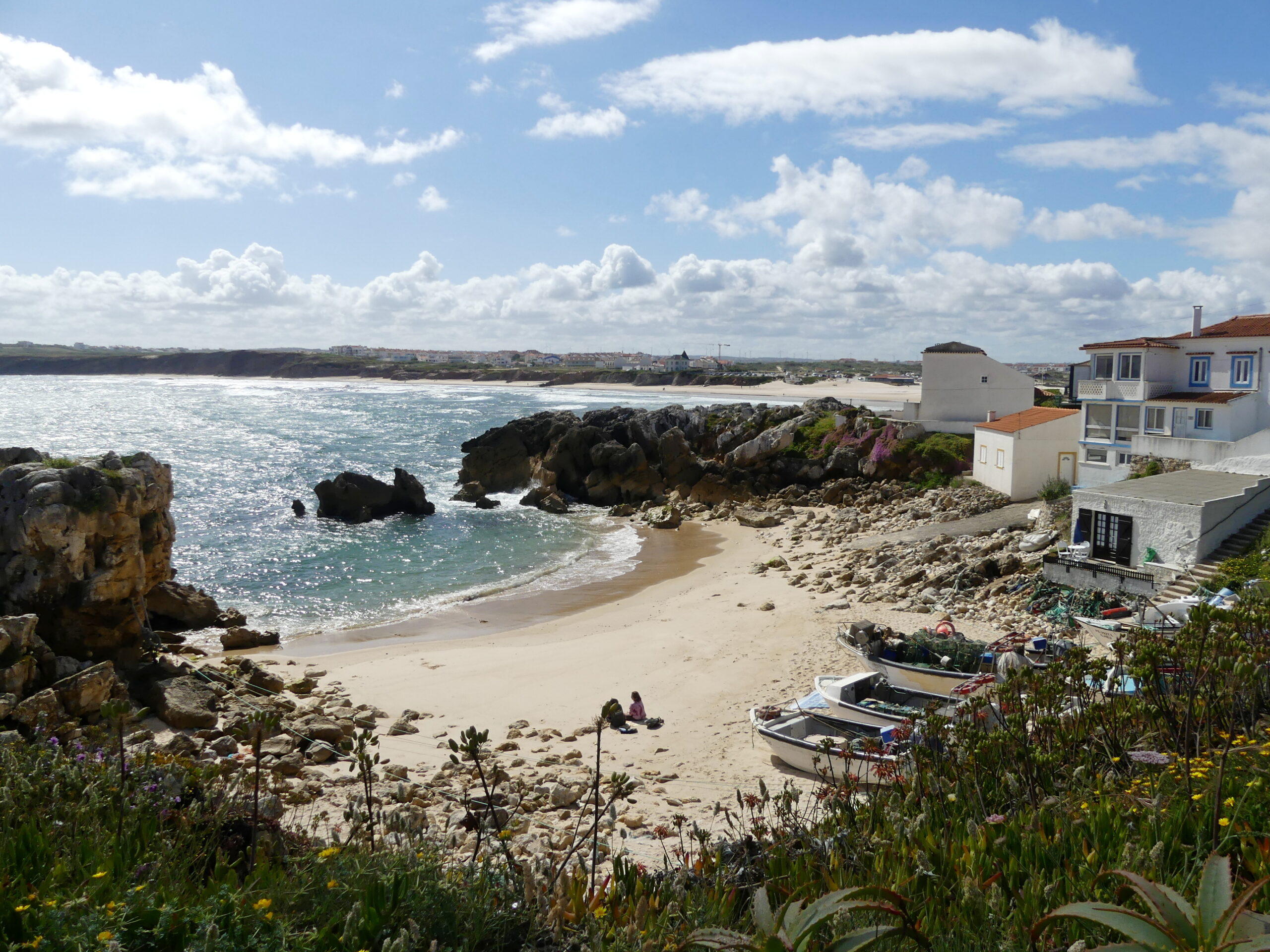
This colorful upheaval of the rocky coast at Baleal’s peninsula head mimics the wave action enjoyed by the surfers.
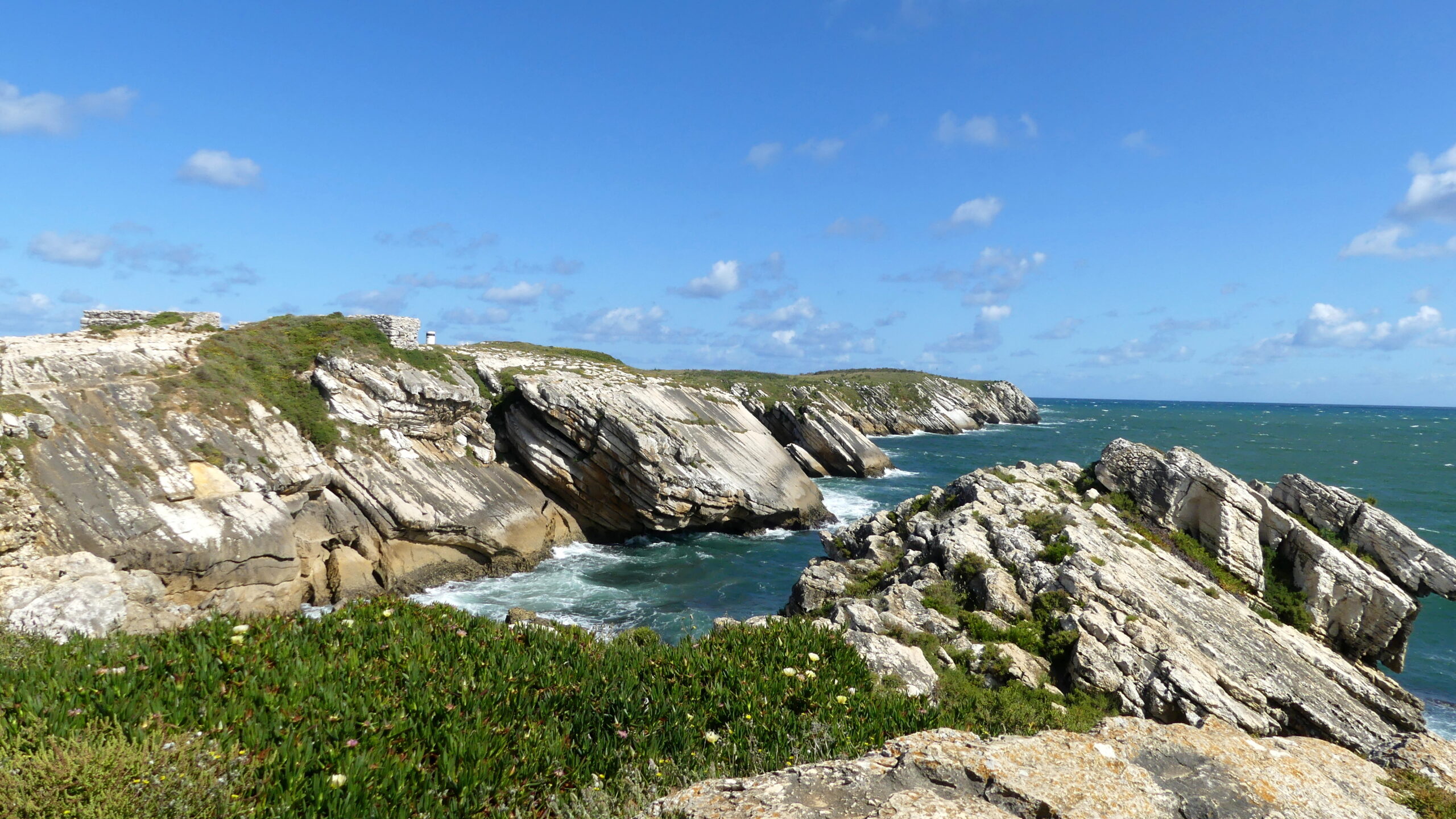
The fort at Peniche, a larger town a few kilometers south of Baleal on a huge peninsula jutting into the ocean. The fort dates from the 16th century just a short while after the peninsula formed naturally, but it reflects much of the renovations of the 19th century. Twice it served as a political prison, first in the 1820s and then from 1934 under the Second Republic.
Today, Peniche’s large apartment buildings and dozens of restaurants host those who prefer a less active stay along a more placid shoreline than the surfers. Out of the harbor, fisherman still work hard for their daily catch, while tourist excursions depart for the nearby nature preserves and bird sanctuaries of the Berlengas Islands.
Buddha Eden: Art and Meditation
Distraught at the destruction of ancient religious statuary in Afghanistan, the head of the Bacalhoa wineries created an unusual park 15 years ago: Buddha Eden, Garden of Peace. By filling this 35-hectare park with Buddha statues, he wanted to honor a rich religious and artistic heritage, a heritage too easily lost. And also instruct and delight the public in a contemplative, Edenic garden setting. That’s how we felt as we ambled there for hours.
More recently, the park added large scale western and African artworks. After crossing the pond on the red bridge, we looked past the surprising iron baobab trees in the foreground at the African section of Buddha Eden – with its metallic herds. Can you find the hippos, water buffalo, and giraffe?
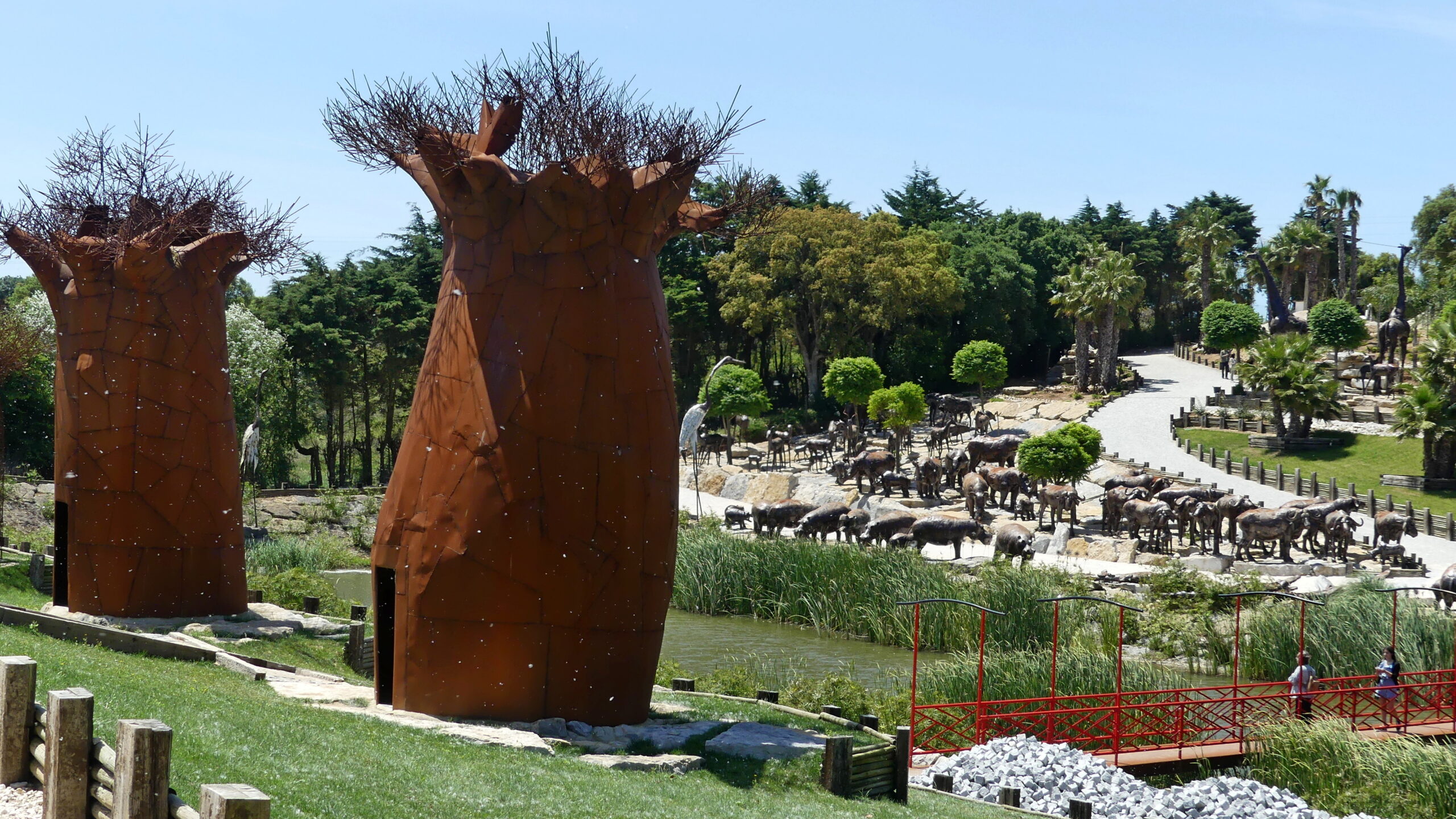
A closer view of the wild African herds in huge metal representations, honoring a natural heritage endangered by everyday human activity. Enormous cranes herald herds of impala and wildebeest. Elephants and giraffe and kudu trod nearby. You can get a feel for the park setting in the background across the pond.
Some of the fun of the African section came from its clusters of smaller animals like these warthogs (as well as meerkats, owls, etc.).
This section of Buddha Eden includes contemporary artworks like this communal convention of heads. With these works hidden within a bamboo labyrinth, we needed to wander watchfully to find them.
A tender, life-sized sculpture in the African section, with intriguing textures. Some statues were modern stylized representations of cranes and storks; others imitated older tribal work.
Buddha Hill rises to the highest point in the park, with a collection of statues in Chinese and SE Asian styles. At the top right are two gigantic ones about 20 meters (70 feet) in stature: the traditional sleeping Buddha and the standing “Giant Buddha”.
These – and the other Buddha statues in the park – required about 6000 tons of marble and granite to create, and lots of talented, faithful carving.
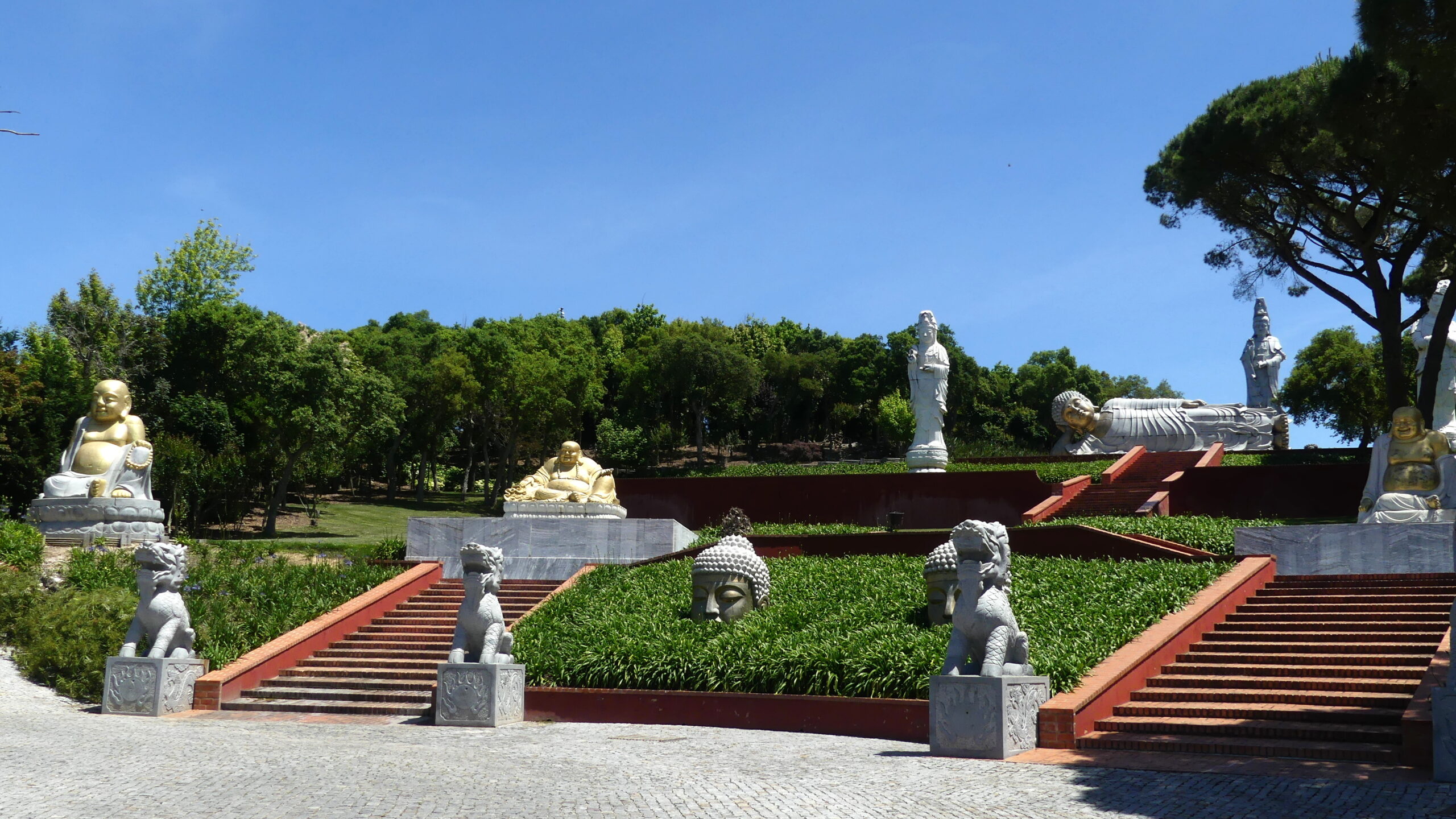
Climbing up to the Giant Buddha, 21 meters tall.
These Buddhas atop a ridge seem to turn their backs on the earthly pleasures that come from the vineyards draping the nearby hillsides. The owner’s dedication to this project seemed more evident to us when we realized that the park must have been converted from valuable wine-producing land.
Several water features within Buddha Eden add to the peaceful feeling. To us, this was the most contemplative of them, with an array of small statuary on the banks.
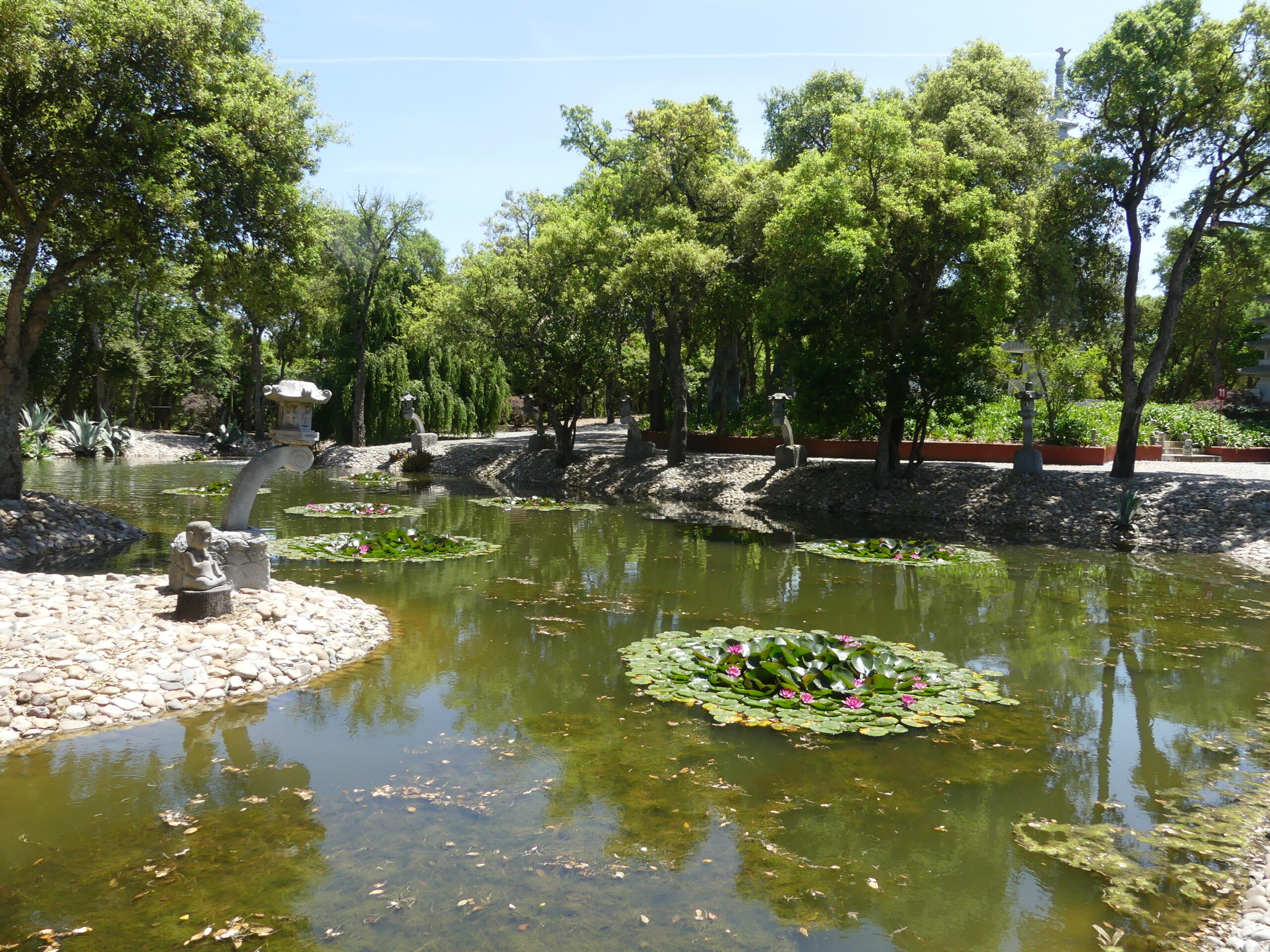
The thousand hands (count them!) of the compassionate, enlightened Buddha on Pavilion Hill near the Giant Buddha.
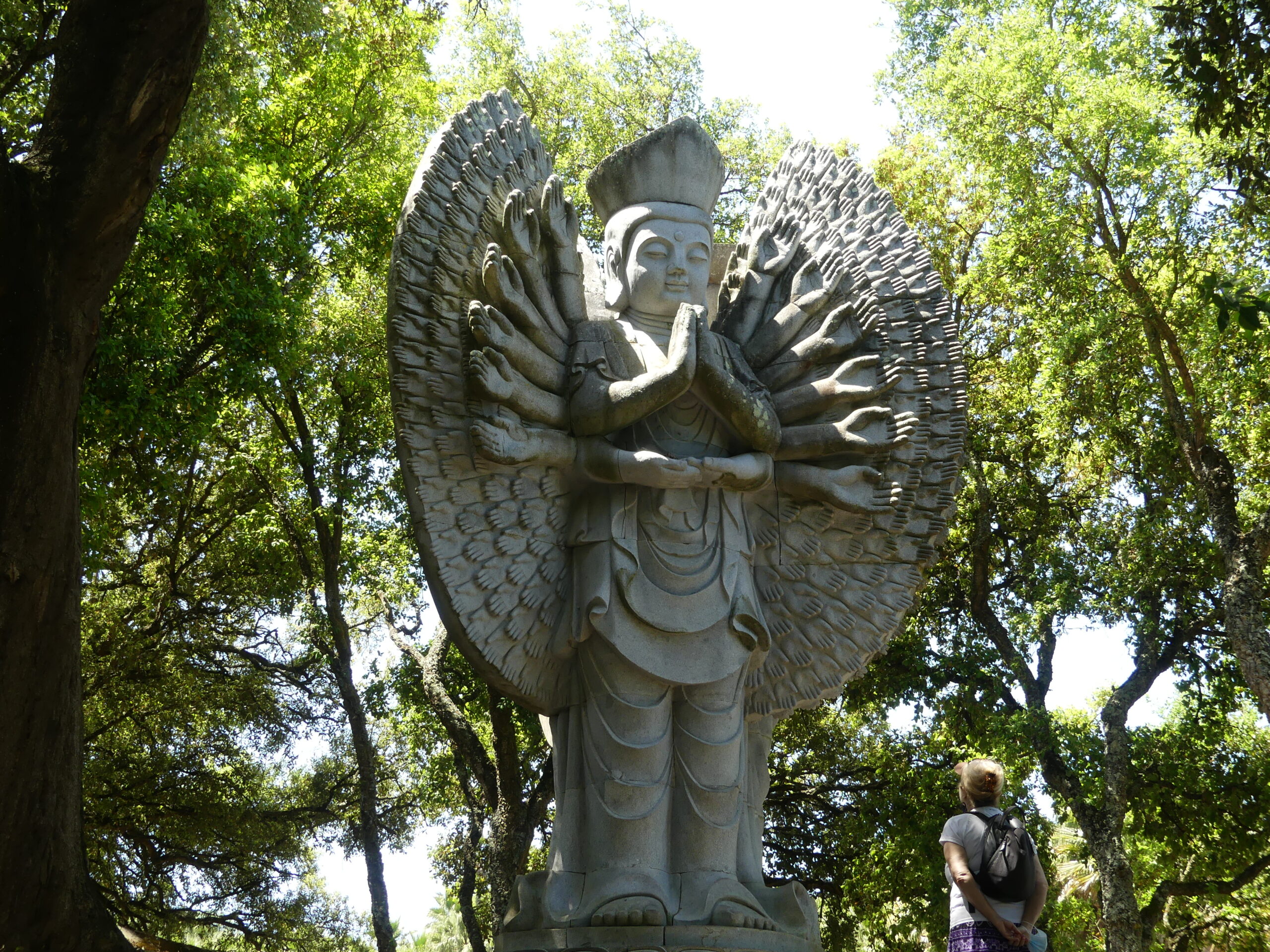
Two Chinese pavilions in granite atop Pavilion Hill. This wooded area, adjacent to the contemplative pond, was a quiet place to rest.
Normally considered a Hindu god, this elephant-headed Ganesha below appears on Pavilion Hill. Ganesha is also an avatar of Buddha, as a Bodhisatva, or Buddha-to-be.
Replicas of the famous terracotta warriors of Xi’an in China, guardians of the buried emperors. As with the originals, each of the 600 soldiers within Buddha Eden has been given a unique combination of body, face, hair, etc. But we never understood why they were painted blue here. Blue was one of the many colors used for the originals, which are now, well, terracotta in hue.
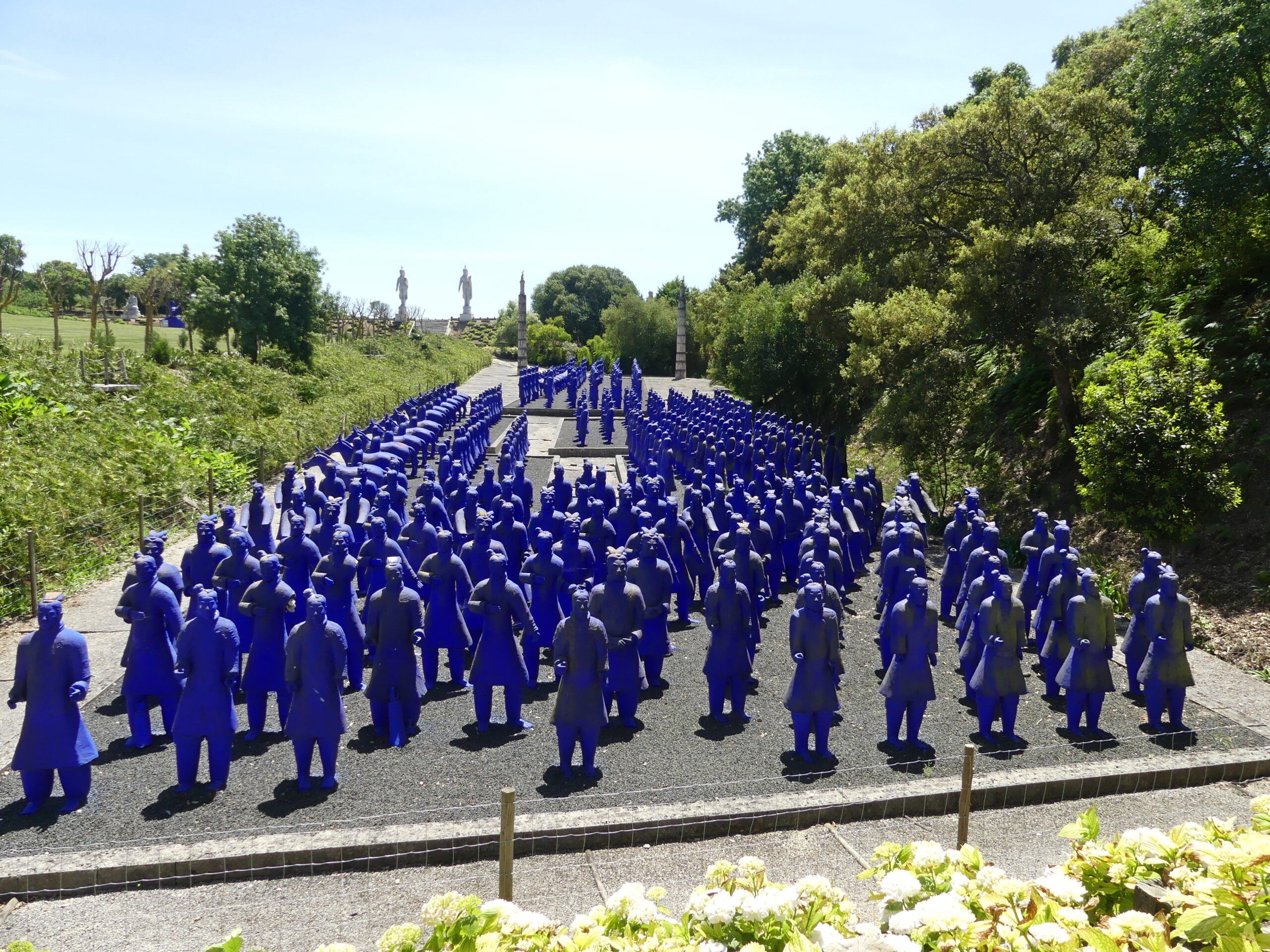
This Robin reminded us that this was a park, open to natural beauty as well as sculpted versions.
This Calder piece was one of many large contemporary sculptures on display near the African section, and reminded us of its cousin back in Chicago.
The works arrayed around the park are part of a valuable art collection gathered by the Bacalhoa chief that is otherwise on display in Lisbon (Belem).
(To enlarge any picture above, click on it. Also, for more pictures from Portugal, CLICK HERE to view the slideshow at the end of the itinerary page.)


